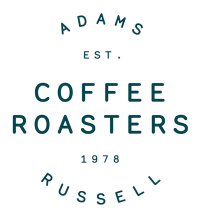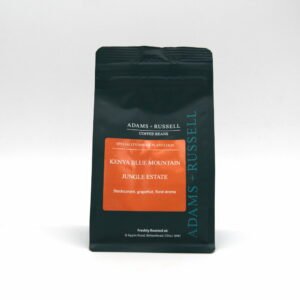Our Guide To Coffee Extraction: How To Achieve The Best Results
- Updated on: March 7, 2024
- Written by: Aimee Bennett
Aimee is a coffee enthusiast and has worked in the coffee industry for years. She sources coffee beans from around the world and her coffee journey began in… (read more).
The term Coffee Extraction has a broad use and an even broader meaning. It’s also (probably) the aspect of coffee brewing the least amount of understanding. In this article we’ll cover the basics of extraction and the problems that arise from under / over extraction. We’ll look at how you can avoid this and in turn, how to achieve the ideal extraction.
Note: The information about extraction can quickly get confusing as it’s a chemical process. The most important thing to takeaway is to be able to recognise the taste and how it can be adjusted.
What Is Coffee Extraction?
The term ‘Coffee Extraction’ refers to the process of dissolving and ‘extracting’ the desirable compounds from the coffee grounds into the water. If extracted incorrectly, or for too long, it is possible for the undesirable compounds to reach the cup, leading to flavour and texture imbalance. Achieving a balanced extraction is crucial for achieving a cup with determined flavour, aroma and quality.
The goal of ‘optimal coffee extraction’ is to achieve a balanced extraction, where the desirable compounds are extracted fully, and the undesirable compounds are minimised. This can be controlled by experimenting with different brewing parameters and adjusting them to achieve your desired flavour profile.
Coffee Extraction Process
Coffee extraction is a complex process, achieving a desirable and consistent rate of extraction requires knowledge and a certain amount of skill and experience. Various brew methods such as V60, cafetière, espresso and cold brew all employ different techniques to control the extraction process and develop the unique flavour and characteristic of the final cup of coffee.
During extraction, hot water comes into contact with the coffee grounds. They contain various soluble compounds such as: sugars, oils, acids and flavours- which when extracted, work together to contribute to the taste, body and complexity of the brewed coffee.
The extraction process can be influenced by several factors, including: water temperature, coffee-to-water ratio and brew time. Finding the right balance between these variables is important to achieve a well-balanced coffee.
What happens when the coffee extraction isn’t quite right? The imbalance is caused by either over-extraction, when the extraction is too slow; or under-extraction, when the extraction is too fast.
Why Is My Coffee Extraction Too Fast?
Under extraction can best be described as a weak, underwhelming coffee with a sour or acidic taste. This occurs when not enough of the desirable compounds are extracted, leading to a harsh flavour. Here are some of the common causes of under extraction and how to fix them.
Grind Size: If the grind is too coarse, it can lead to a fast extraction as the water flows through the grounds too quickly, leading to under-extraction. Try using a finer setting to slow down the extraction.
Water Temperature: Coffee should be brewed with water that’s between 90 – 96 degrees. If the water isn’t hot enough, it can contribute to a fast extraction. Try using hotter water to slow down the extraction.
Coffee-To-Water Ratio: If you use too little coffee for the amount of water, this can result in a faster extraction. Both filter and espresso methods will suffer from a weak and insipid taste. Adjust the ratio to ensure you’re the correct amount of coffee.
Tip: Each morning in the Roastery, we brew ourselves a filter coffee. Not only is this a good opportunity for us to try new coffees, we also experiment with brew methods and ratios. To help with this, we use this brew ratio calculator from Honest Coffee Guide which takes the guess work out of manual brew ratios.
Distribution And Tamping: When creating an espresso, uneven distribution and tamping can lead to channelling. This is where the water finds paths of least resistance and flows through the coffee bed too quickly. To prevent this, ensure the coffee grounds are evenly distributed and levelled before tamping. Use firm, even pressure to promote uniform extraction.
By considering these factors and making adjustments as needed, you should be able to slow down the rate of extraction and achieve a perfectly balanced cup with plenty of flavour.
What Does Under Extracted Coffee Taste Like?
Sourness
The most recognisable ‘taste’ associated with under extracted coffee. The sour, acidic taste can be pronounced, making the coffee taste sharp and tangy.
Light Body
Under extraction normally creates a light, thin body compared to that of a properly extracted cup. It will lack the fullness and the mouthfeel you would expect.
Lack Of Sweetness
The natural sugars from the coffee beans aren’t fully extracted, resulting In an unbalanced flavour with a diminished sweetness.
Weak Flavour
The overall flavour of under-extracted coffee can best be described as weak or muted. The extraction process is responsible for unlocking and highlighting the various flavours and aromas that are present in the coffee, under extraction can hinder this process.
Astringency
While under-extracted coffee is more commonly associated with sourness, it can also exhibit astringency. This refers to a dry or puckered sensation in the mouth, similar to what you might experience when drinking over-steeped tea.
Why Is My Coffee Extraction Too Slow?
When coffee is over extracted, it exhibits an unpleasantly bitter and strong flavour. It’s harsh and in some cases, can have a charred flavour. Here are some of the most common causes of over extraction and how to fix them.
Grind Size
If your coffee grind size is too fine, it will slow down the extraction process as the water will have difficulty passing through the grounds. This creates a slow flow as the grounds are so tightly packed. Try adjusting your grinder to a coarser setting to improve the extraction speed.
Coffee-To-Water Ratio
If you use too much coffee in relation to the amount of water this can slow down the extraction. A high ratio creates a denser bed of grounds that the water struggles to pass through. Ensure you’re using the correct amount of coffee for the amount of water.
Water Temperature
Ensure your water temperature is between 90 – 96 degrees. Tip: preheat your equipment and cup before use.
Equipment Or Technique Issues:
Check your brewing equipment for any clogs or blockages that could be impeding the flow of water. Additionally, make sure that you’re using the proper technique for your chosen brew method. For example, with a pour-over method, you may need to adjust your pouring technique to encourage a more uniform and faster extraction.





